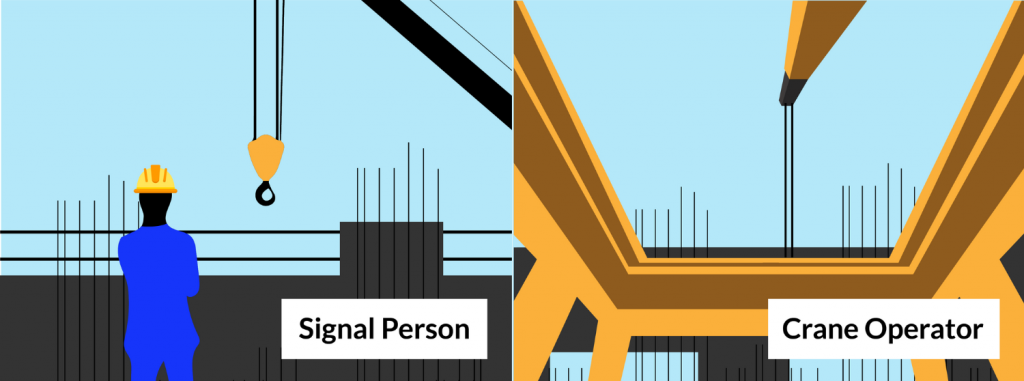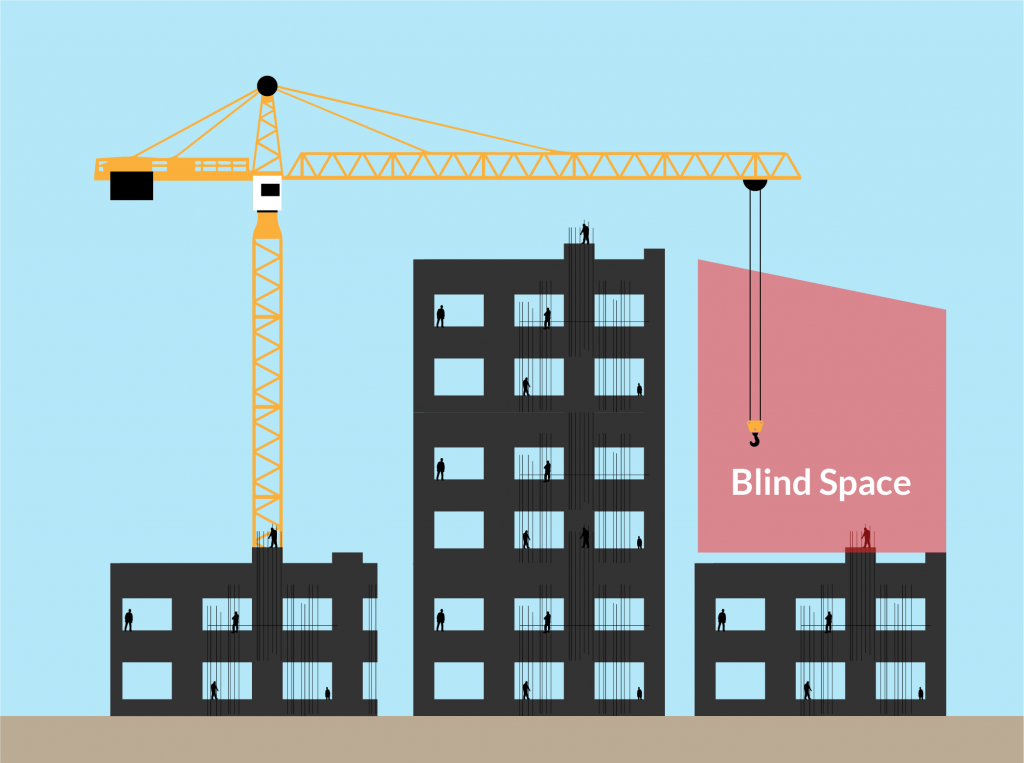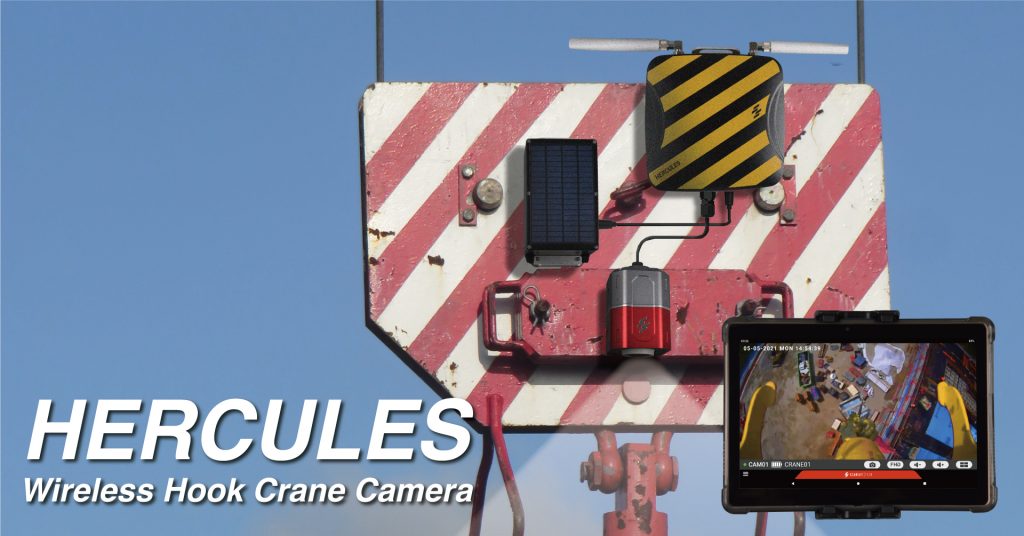Know How –
Blind Spots in Construction Sites: Is It Inevitable?
In the construction sector, ensuring safety is crucial; however, blind spots, a commonly neglected hazard, pose significant risks to workers and vehicles. In this article, we will explore the concept of blind spots, particularly in construction sites and how they impact safety. By emphasizing the importance of addressing and sharing various solutions, we aim to raise awareness and minimize the risk of accidents associated with these unseen areas.
What Exactly Are Blind Spots?
Blind spots are the areas around a vehicle that are not directly visible from the driver’s seat. Today, “blind spots” are more often understood as “vehicle blind spots”. The image below showcases the viewpoints of the signal person and crane operator, emphasizing the limited visibility that persists for crane operators.

Addressing Blind Spots is Crucial for Safety
Blind spot-related accidents may be more frequent than we predicted. According to a study conducted by the University of Michigan Transportation Research Institute on prioritizing improvements in truck driver, it was discovered that around 20% of crashes were caused by the restricted visibility experienced by truck drivers.
In 2006, National Transportation Safety Board issued a letter to National Highway Traffic Safety Administration (NHTSA) to take action on the mitigation of blind spots.
NHTSA is aware of the hidden concern of blind spots, as is the National Institute for Occupational Safety and Health (NOISH). The NOISH lists blind area diagrams of construction vehicles, including various kinds of dump trucks, loaders, and scrapers, etc.
Are Blind Spots Inevitable?
We have discovered that blind spots can occur on many construction vehicles.
In general, the taller and longer the vehicle, the bigger the blind spots. Compared to trucks and mobile cranes, tower cranes pose significant blind spot challenges, let alone human eyesight limitations and sun blind caused by the weather conditions.

What Are The Solutions?
An expanding array of technology is being investigated to address the issue of blind spots and mitigate the potential hazards or reduce the resulting risk. These include Building Information Modeling (BIM) technology, anti-collision systems, collision-detection systems, and tower-crane-mounted live video systems.
Among these solutions, tower crane camera systems are gaining attention due to their ability to save 29% of total traveling time (loading and unloading) at construction sites. Last but not least, it is important to highlight that this is only the measurable quantitative data reported in the study of vision system for tower cranes, without taking into account the enhanced confidence of the operators.
We Have The Solution

Hercules is the tower crane camera system that has been improved and upgraded to fit the market’s needs and expectations. With the latest WiFi 5GHz technology, Hercules has overcome a common latency issue in streaming 2K high-resolution video footage over long-range distances.
Contact us for our best price and elevate your construction safety now!
References
- Blind spot (vision) – Wikipedia
- Reed, Matthew P., Daniel Blower, and Michael J. Flannagan. Prioritizing improvements to truck driver vision. No. UMTRI-2005-31. University of Michigan. Transportation Research Institute, 2006.
- Howe, Gavin, et al. Commercial connected vehicle test procedure development and test results–blind spot warning/lane change warning. No. DOT HS 812 317. 2016.
- Shapira, Aviad, Yehiel Rosenfeld, and Israel Mizrahi. “Vision system for tower cranes.” Journal of Construction Engineering and Management 134.5 (2008): 320-332.
- Visibility Around Heavy Vehicles – SAAQ (gouv.qc.ca)Zhang, Mingyuan, Rui Shi, and Zhen Yang. “A critical review of vision-based occupational health and safety monitoring of construction site workers.” Safety science 126 (2020): 104658.
Pick a perfect Anemometer
How to Choose the Perfect Anemometer for Construction Site Safety?
There are many different types of anemometers in the market with different functionalities. Before choosing any of the anemometers, you have to get complete knowledge about it in order to meet your demands. Here is a glimpse of information about different types of anemometers.
Choosing anemometers is particularly important in situations where loads and equipment will be raised significantly above the ground or building, which is especially relevant when planning tasks involving crane operation and heavy lifting. Attaching an anemometer to the boom point is a sensible way to monitor the different wind speeds at operating altitudes for cranes.
Heat Stress
What is Heat Stress?
Heat stress is the effect that the thermal environment has on a person’s ability to maintain a normal body temperature. Physical work generates heat in the body which must be lost to the environment through sweating and evaporation. A hot or humid environment makes this more difficult and this can affect both mental and physical performance. Inability to get rid of body heat adequately may result in heat illness.
Workers who are exposed to extreme heat or work in hot environments may be at risk of heat stress. Exposure to extreme heat can result in occupational illnesses and injuries. Heat stress can result in heat stroke, heat exhaustion, heat cramps, or heat rashes.
Other Know Hows
Pick a perfect Anemometer
How to Choose the Perfect Anemometer for Construction Site Safety?
Choosing anemometers is particularly important in situations where loads and equipment will be raised significantly above the ground or building.
Heat Stress
What is Heat Stress?
Heat stress is the effect that the thermal environment has on a person’s ability to maintain a normal body temperature. Inability to get rid of body heat adequately may result in heat illness.
